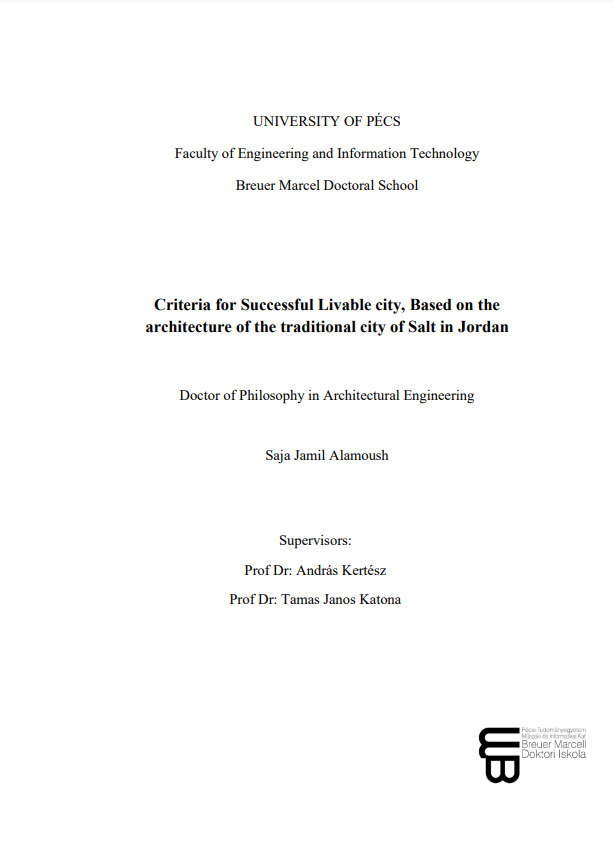Criteria for Successful Livable city, Based on the architecture of the traditional city of Salt in Jordan
Abstract
The livability of the city is fulfilled through good planning; by providing a vibrant,attractive, walkable and safe environment for people to live, work and play. At the same time, a livable successful city is a place that has a strong and local distinctive identity
that reflects the heritage and culture in their built form, this research focuses on the criteria of livable successful cities in Jordan, taking a heritage city of Salt as a case, by connecting the criteria of livable cities with the architectural physical elements which
can be categorized under three main categories: landscape, building and street linkage. Jordan cities currently are losing a great part of their heritage due to rapid development, demolition in the name of progress, vandalism, and misuse. Most planning projects have been conducted without a clear reference or benchmark to guide practice. Thus, this research tries to find a guideline for planning and developing livable cities. Mixedmethod was used in this study namely; qualitative data collection that involves direct site observation and historical document review. The quantitative data collection involves questionnaires (n= 330) and the data was statically analyzed such, as percentage and frequency. The findings are determined through the triangulation of all data. This research found that the criteria of a livable city can be categorized under two main factors which are: imageability and walkability. In addition, each factor contains sub-factors including their own physical elements.

